In April 2025 , we launched our new Woven Through Time exhibition at Bradford Industrial Museum, featuring stunning photographs by Ian Beesley. Our Assistant Curator of Collections, Emma Longmuir, shares the journey of curating this exhibition.
Bradford has been producing fabric for hundreds of years. These products were originally made in people’s homes, but developments in the 1700s and 1800s turned Bradford into an industrial centre of textile production. The city’s textile industry became an integral part of the city’s identity, so much so that it earned the nickname Worstedopolis, after the worsted yarn and fabric that was mainly produced in the area. Worsted yarn is ideal for making the smooth and durable fabrics needed for suits, which were in demand at the time. By the 1850s, Bradford was producing around two thirds of the UK’s woollen textiles. At its height, the Bradford wool industry employed around 70,000 people. Workers migrated to work in the growing industry, first from the UK countryside, then from abroad in the 1900s.
By the mid-1900s overseas competition and the growing popularity of synthetic fabrics had reduced the demand for worsted products. This forced many mills to close, leaving thousands of people without jobs. Despite this, the tradition of manufacturing high quality textiles survives in Bradford today. Many companies have thrived by targeting luxury markets, focusing on high quality, sustainable products.
Given the significance of Bradford’s textile industry, we knew it had to be a highlight during the City of Culture year. Bradford Industrial Museum, a former worsted spinning mill, seemed like the perfect setting for an exhibition on the subject.
In 2023, Bradford District Museums and Galleries was gifted the complete back catalogue of Bradford-born photographer Ian Beesley. This collection includes striking images of Bradford mills during the late 1970s and early 1980s. These photos show the inner workings of the mills, including shots of different textile processes and employees at work.
Regarding this work, Ian had the following to say:
When photographing mills in the 1980s, the biggest difficulty was access. Some mills would not allow access at all, claiming photography would hinder production or capture sensitive company secrets. In hindsight it was probably neither of these and more likely to do with working conditions. Even in the 1980s, working conditions in some mills weren’t good. Other mills would give me access once they announced closure so that there was a historical record of them having existed. A valid reason, and thankfully others like Salts Mill, Drummonds Mill, John Forster’s Black Dyke Mills and Brackendale Mills gave me open access.
In the late 70s and early 80s so many mills were closing and being demolished. It was very difficult on my limited resources to document as many places as I would have liked to and sadly there were quite a lot I missed.
One of the aims of the exhibition was to celebrate the industry as it is today and explore recent innovations and sustainable practices. After discussing this with Ian, we decided to commission new photographs, which would allow us to draw comparisons between the past and present and highlight recent changes. Since many of Ian’s earlier photographs depicted weaving and spinning processes, we chose to shoot at Pennine Weavers in Keighley and yarn manufacturer Laxtons in Baildon.
Other local companies that contributed to the exhibition include Joseph H Clissold, John Foster, Melrose Interiors, and The Stitch Society. We also collaborated with British Wool to highlight that Bradford is home to their head office and one of their largest wool grading depots. To learn more about wool grading, watch the video below to view a video produced by British Wool at the Bradford depot.
Ian’s earlier photographs were each paired with one of the new photo commissions that shows a similar process or visual. These are now displayed around the gallery, starting with the early stages of the worsted manufacturing process and ending with finishing processes, like burling and mending.
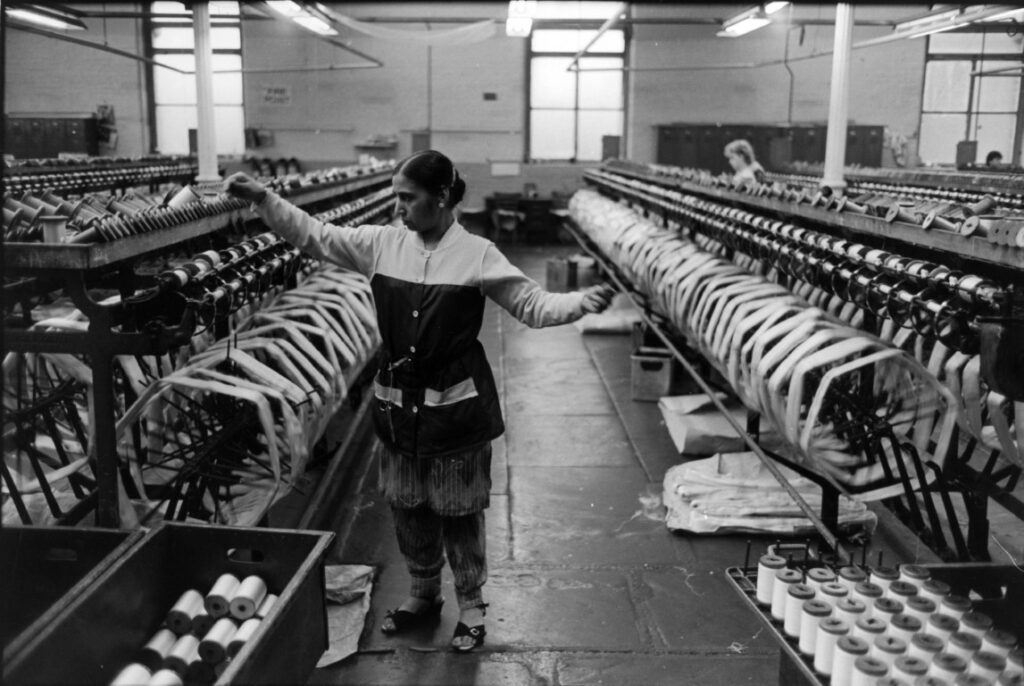
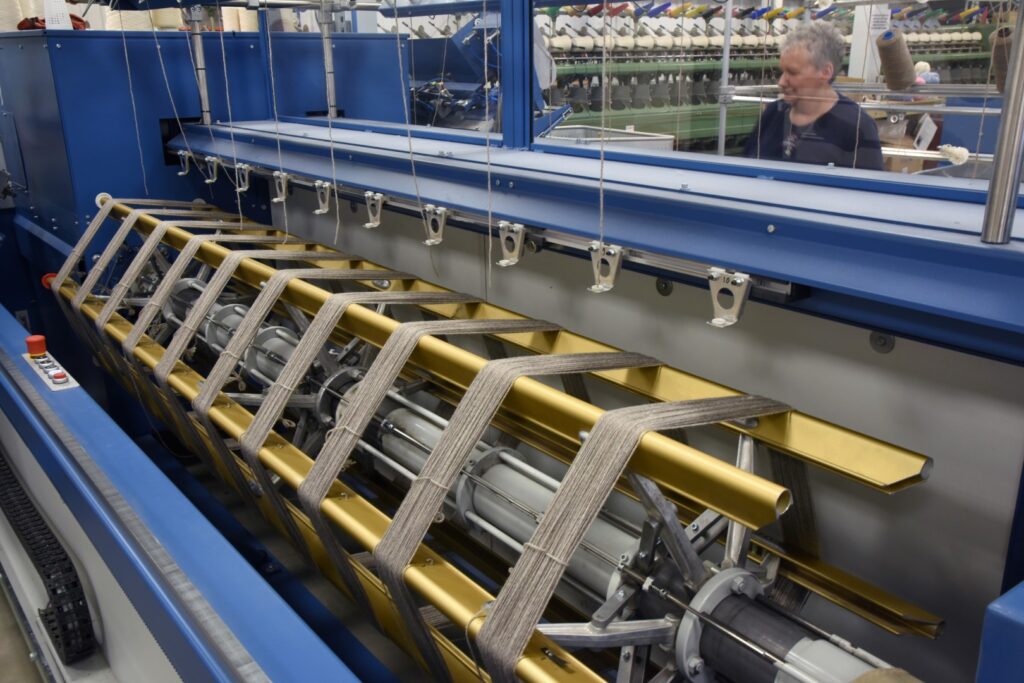
Laxtons Ltd, Baildon © Ian Beesley
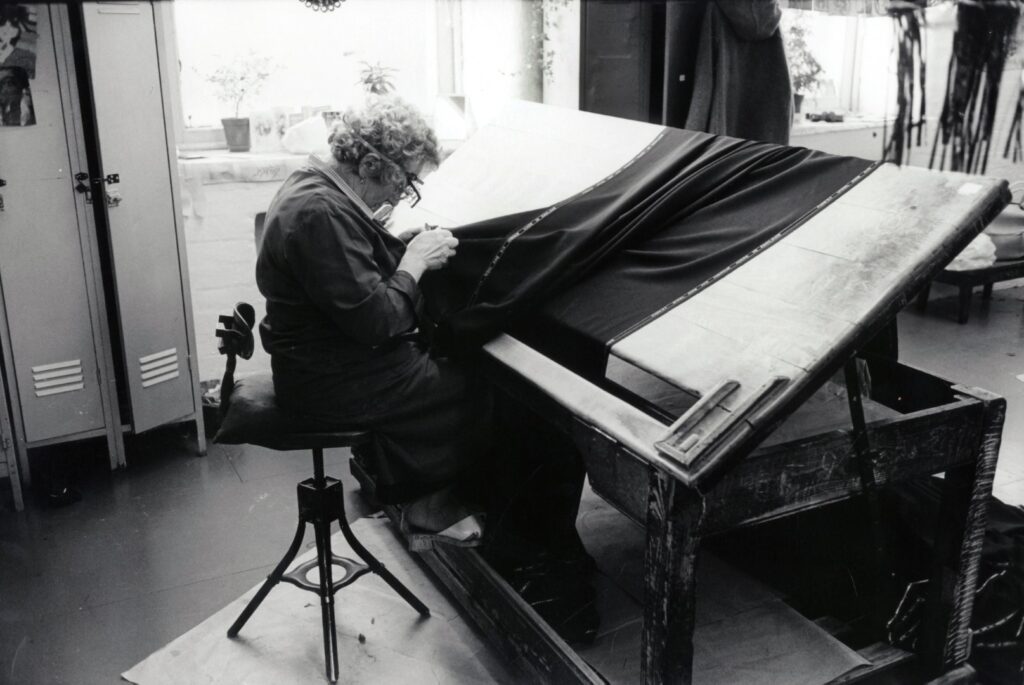
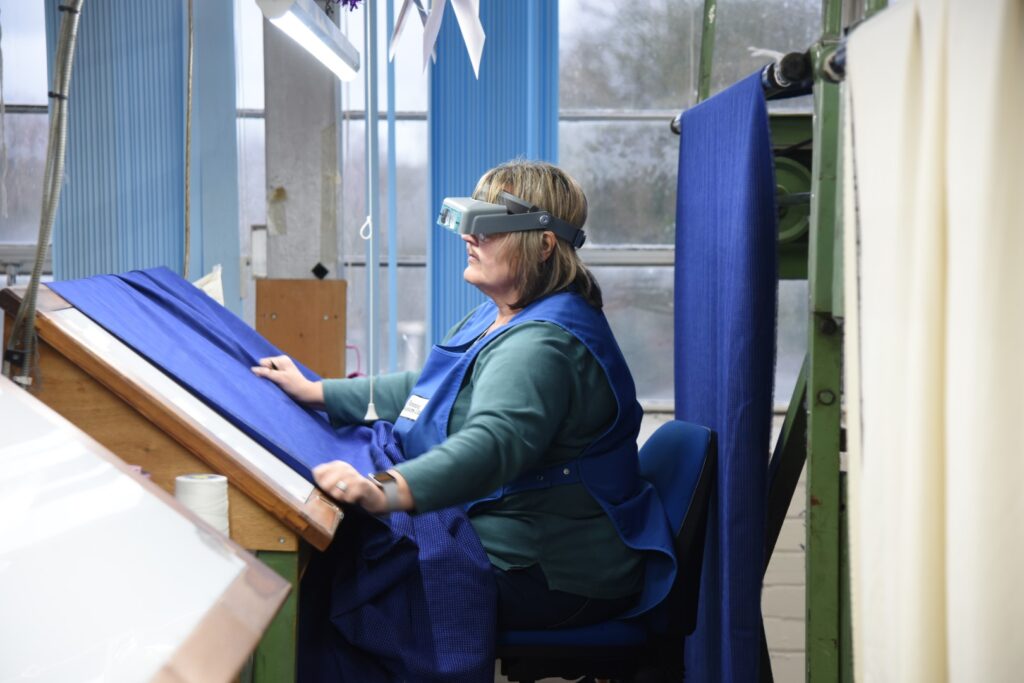
© Ian Beesley
As the curator of the exhibition, I wanted decorative elements of the display to reference the industry as much as possible. Fabric lengths from Bradford District Museums and Galleries’ collection have been used to line the bottom of the display cases, adding unique colours and patterns to each. Large wooden bobbins act as object label stands, and our Photo Archive Assistant, Olivia Johnston, took close-up photographs of fabric samples from the collection, which have been used on the interpretation panels as decorative borders.
Due to Bradford’s reputation for producing clothing pieces such as suits, we wanted to include examples of both historical and contemporary costume in the exhibition – some loaned to us and some from our costume collection. Here are some highlights:
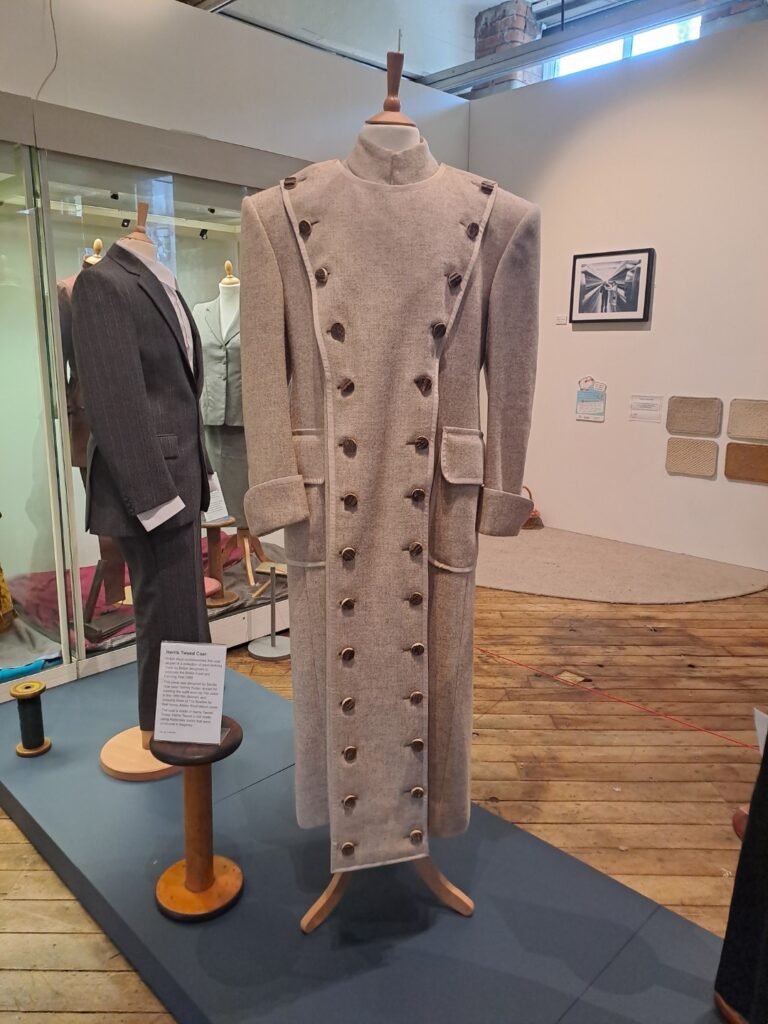
Bradford District Museums and Galleries collection.
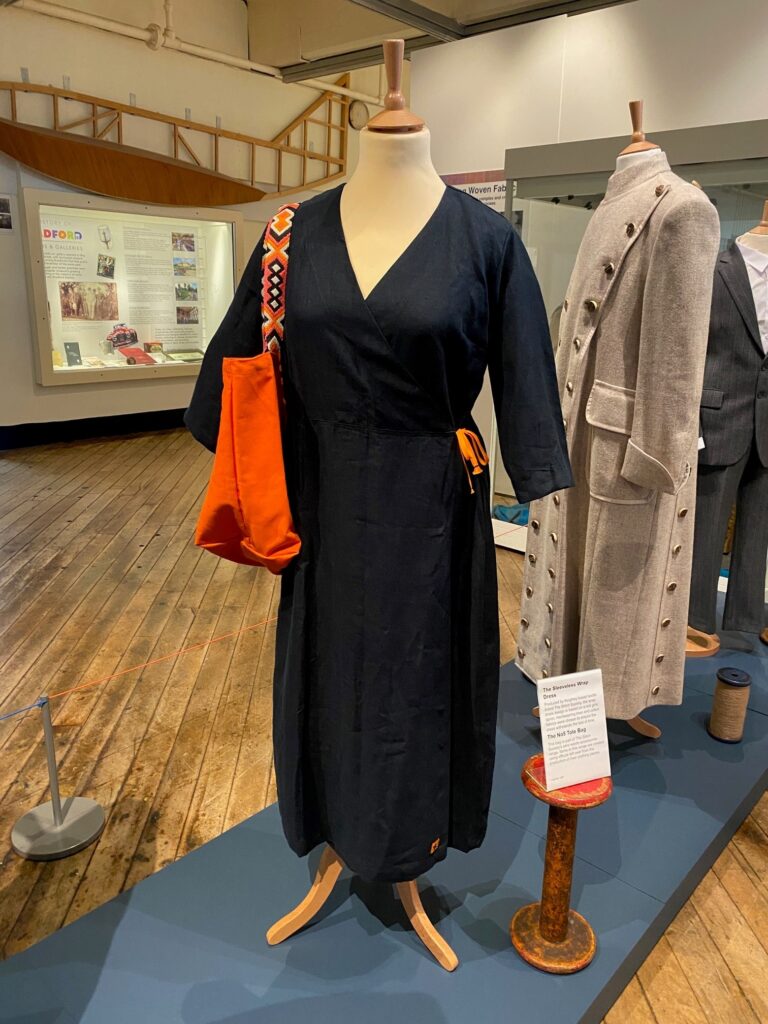
Loaned by The Stitch Society
Harris Tweed Coat
This coat was commissioned by British Wool as part of a collection of wool clothing made by British designers to celebrate the British Food and Farming Year,1989. It was designed by Tommy Nutter who is well known for creating the outfit worn by The Joker in the 1989 film Batman, and dressing three of The Beatles for their iconic Abbey Road album cover.
The coat is made from Harris Tweed, produced on the Isle of Harris in Scotland. Many weavers on the island still use Hattersley looms that were produced in Keighley. The Hattersley Domestic Loom was designed for home use and its compact design made it ideal for transporting to the island.
The Sleeveless Wrap Dress and The No5 Tote Bag
This wrap dress and bag are produced by Keighley based textile brand The Stitch Society. The wrap dress design is based on a mill girls’ apron and made from hardwearing fabric to ensure the dress withstands the test of time.
The No5 Bag is part of The Stitch Society’s zero waste accessories range. Items in this sustainable range are created using offcuts from the production of their clothing pieces.
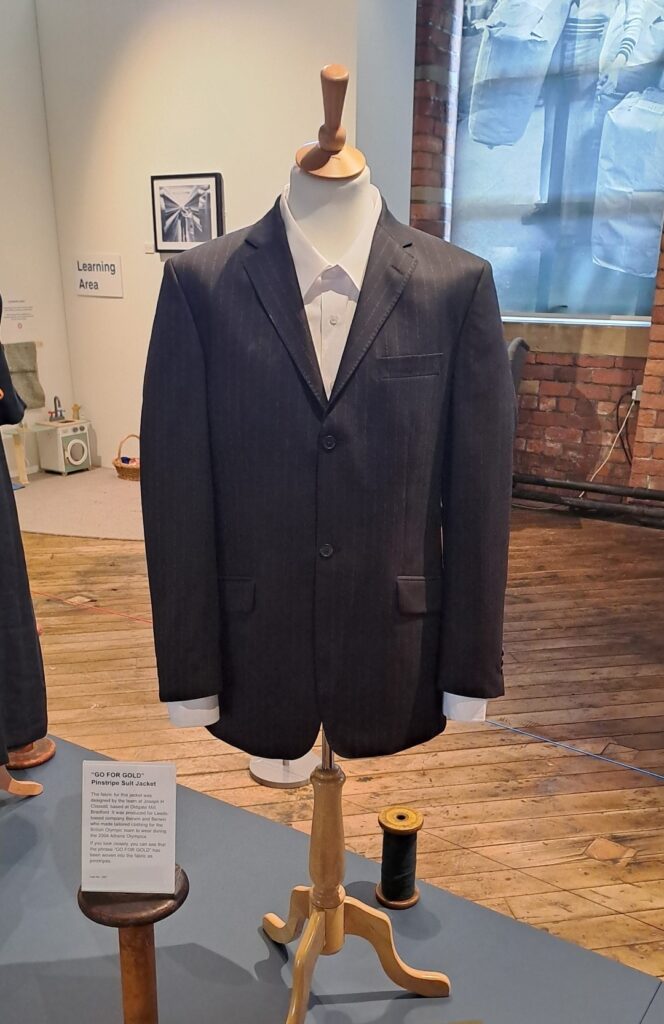
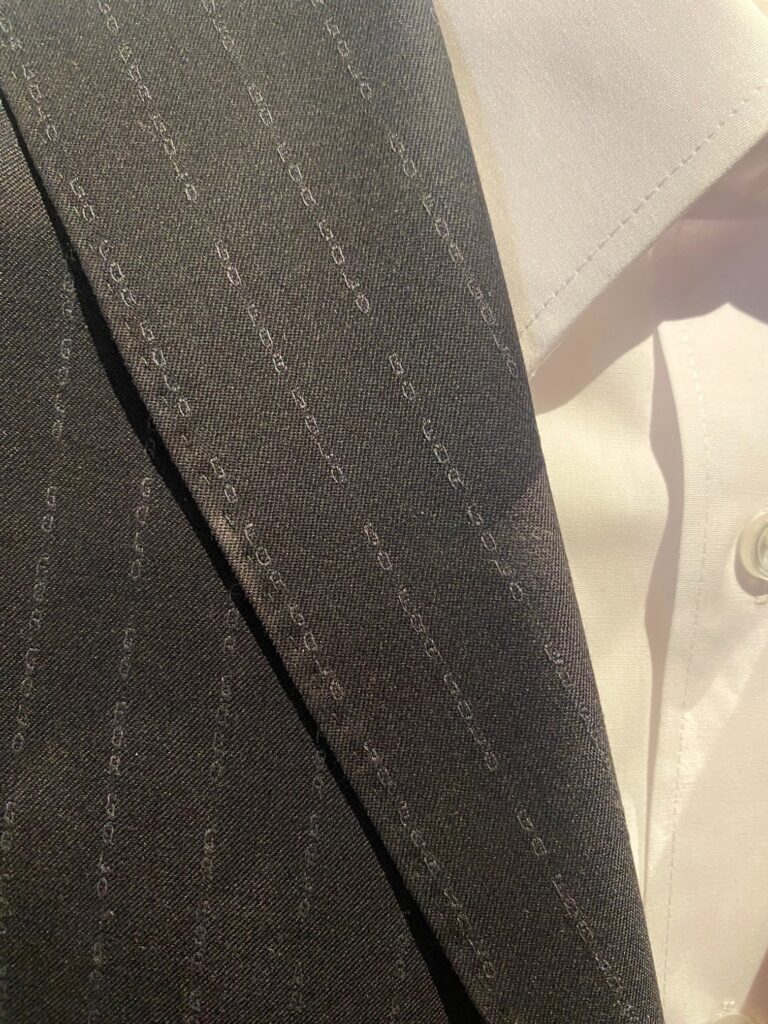
The fabric for this jacket was designed by the team at Joseph H Clissold, based at Oldgate Mill, Bradford. It was produced for Leeds-based company Berwin and Berwin who made tailored clothing for the British Olympic team to wear during the 2004 Athens Olympics. The phrase “GO FOR GOLD” has been woven into the fabric as pinstripes.
The exhibition is open until November 16th, 2025. Be sure to visit and celebrate Bradford’s rich textile history with us!
Photographs by Ian Beesley can be purchased from our photo archive website here: Ian Beesley – Photos Bradford – Bradford District Museums & Galleries
We will be adding more images from the archive to the website in the near future, so keep checking back for new additions.